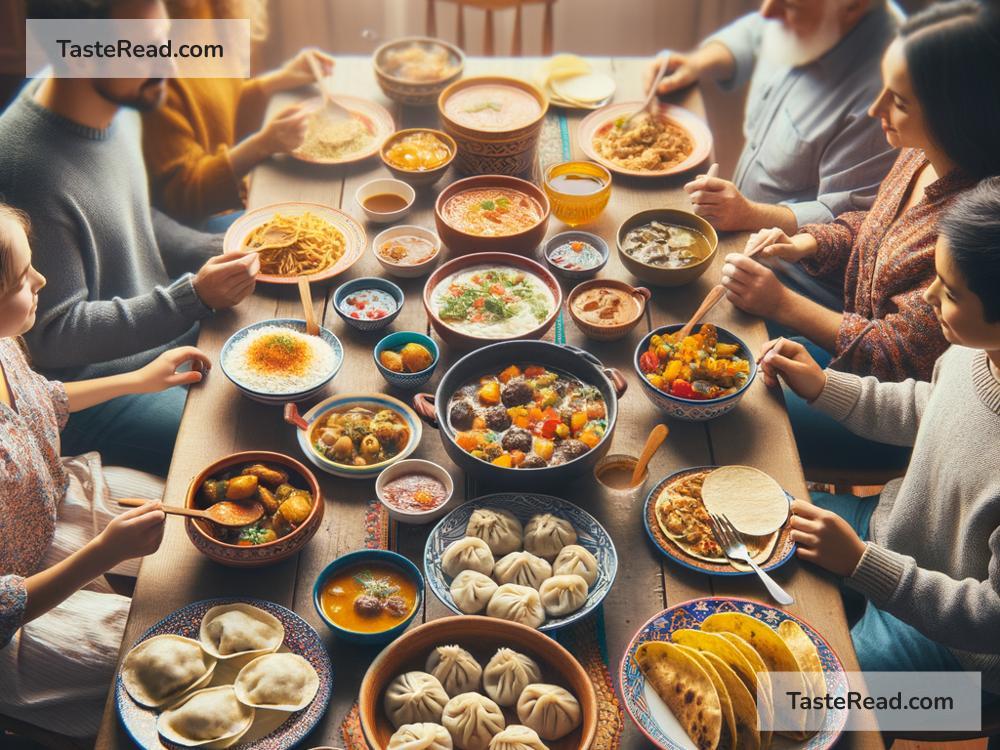The Impact of Cultural Traditions on Eating Habits
Every country and community around the world has unique cultural traditions. These traditions shape people’s daily lives, including their eating habits. Food is not just about staying healthy; it’s deeply tied to culture, heritage, and identity. In this blog, we will explore how cultural traditions influence what we eat, when we eat, and how we share food.
Food Choices: What People Eat
The types of food people eat are strongly influenced by their cultural traditions. For example, countries like Japan often focus on rice, fish, and vegetables, while Italian cuisine is famous for pasta, olive oil, and tomatoes. These food choices are often connected to the resources available in the region. Historically, people ate what was grown or produced near them. Over time, these local ingredients became part of traditional dishes.
Cultural traditions also influence the idea of “comfort food.” Comfort food is what people eat when they want to feel relaxed or happy. For example, chicken soup might be a common comfort food in America, while spicy curries might be comforting to people in India. These familiar foods bring a sense of belonging and connection to one’s roots.
Mealtime Practices: When and How People Eat
Culture doesn’t only decide what people eat—it also plays a role in when and how they eat. In many cultures, meals are shared with family and friends, creating a sense of community. For example, in Mediterranean cultures, dinner can be a long, social event where people sit together and talk for hours. In contrast, countries like Japan have traditions of quiet and respectful eating.
The timing of meals is also influenced by cultural habits. In Spain, lunch is often the biggest meal of the day, followed by a short nap called the “siesta.” Dinner is usually eaten late at night, sometimes as late as 10 p.m. On the other hand, in countries like the United States, dinner is typically served earlier, around 6 or 7 p.m., and is often the largest meal.
Religious beliefs often shape mealtime practices, too. For example, Muslims fast during Ramadan, eating only before sunrise and after sunset. This practice not only connects people to their faith but also teaches self-discipline and empathy for those who don’t have enough food.
Traditional Cooking Methods: How Food is Prepared
Cultural traditions also affect how food is cooked. Different communities have created unique cooking techniques that reflect their history and environment. Indigenous people in South America, for example, long ago developed ways to cook food underground using hot stones. In China, stir-frying is a popular method because it uses less fuel and cooks food quickly—an approach that made sense in ancient China when people needed to save resources.
Spices and flavorings are another interesting aspect of food preparation that is tied to culture. Indian food is known for its use of spices like turmeric, cumin, and cardamom, while Scandinavian countries use milder seasonings. These flavors reflect the history, trade connections, and natural resources of each region.
Social Connections and Celebrations: Sharing Food
Food plays a big role in social gatherings and celebrations all over the world. Special occasions, like weddings, festivals, or religious events, often feature traditional dishes that bring meaning to the event and unite people. For example, during Thanksgiving in the United States, families often share a meal that includes turkey, potatoes, and pie. This tradition is a way of giving thanks and spending time with loved ones.
In Mexico, Dia de los Muertos (Day of the Dead) celebrations include “pan de muerto” (a special sweet bread) and other favorite foods to honor deceased family members. Meanwhile, in China, people eat “mooncakes” during the Mid-Autumn Festival to celebrate family unity and the harvest.
These traditions remind us that food is not just fuel for the body—it’s also a way to express emotions, honor relationships, and pass down heritage.
Modern Changes: Adapting to a Global World
While many people continue to follow traditional eating habits, globalization has made it easier than ever to try new foods. Fast food and international restaurants can now be found in almost every corner of the world. A teenager in India might eat pizza and pasta, while someone in Canada might enjoy sushi and Thai curry. Although modern food choices have added variety, some cultural traditions are at risk of disappearing as people adopt new eating habits.
On the bright side, greater access to different types of food allows people to experience and appreciate other cultures. Cooking classes, food festivals, and international recipes help preserve traditions while encouraging cross-cultural exchange.
Conclusion: Food Connects Us to Culture
Cultural traditions have a deep impact on eating habits. They shape the food we eat, the way we prepare it, and the way we share it with others. Food is an important part of identity, helping people stay connected to their roots. As the world becomes more globalized, it’s important to respect and celebrate the beauty of different food traditions. After all, food is more than just nourishment—it’s a way to honor our past, strengthen relationships, and share joy with those around us.
So, the next time you enjoy a meal, take a moment to think about where the recipe comes from and the cultural stories behind it. Every dish has a history—and that history helps make the world a richer, more diverse place.


